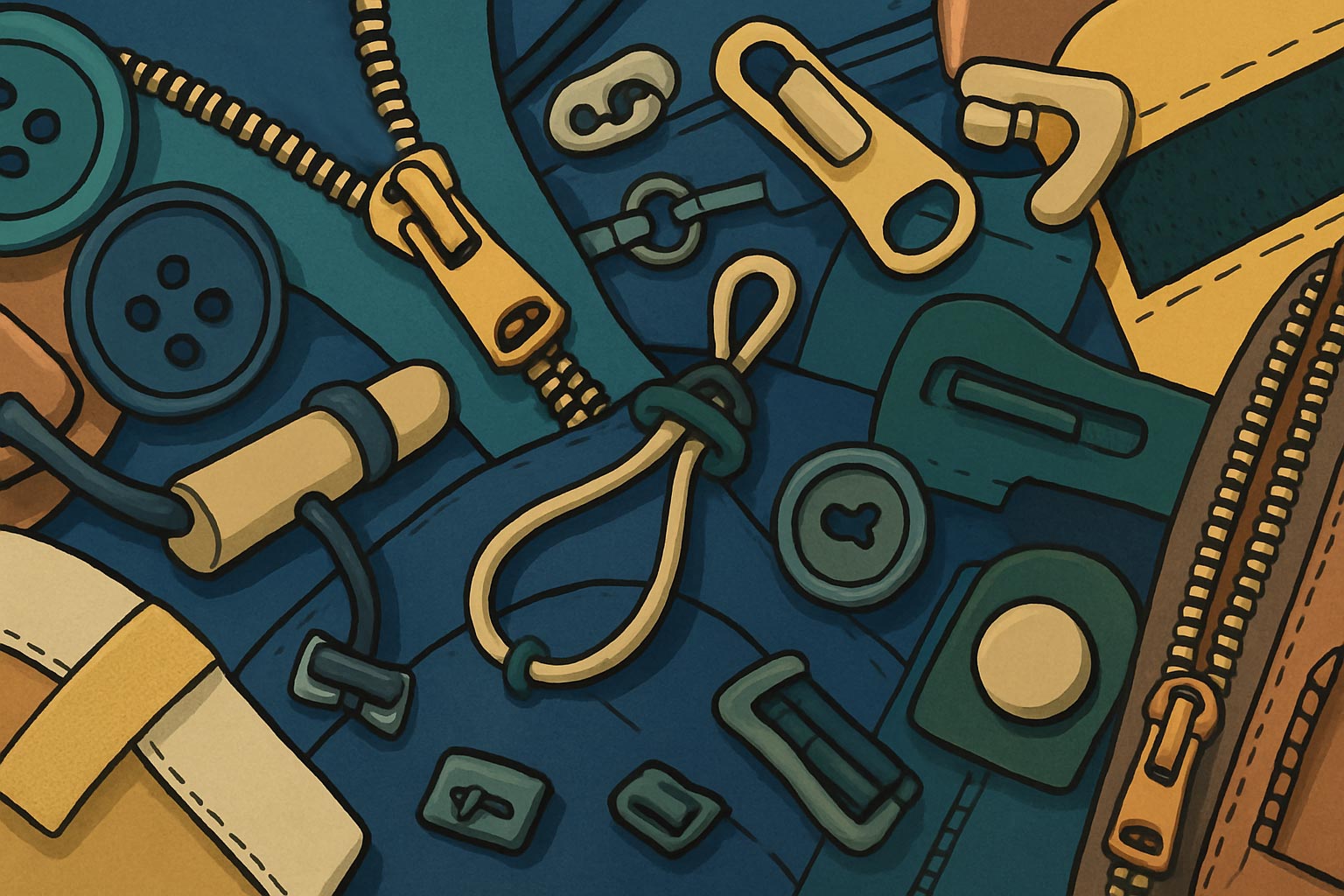Closures might seem like a small detail, but in the world of uniforms, they are a big deal. Whether it is a shirt, coat, or pair of pants, how a garment is fastened plays a crucial role in both functionality and design.
Let’s break down the many types of apparel closures you will find in uniforms and workwear.
Mechanical Closures
- Buttons – The classic option. Available in flat or shank styles, buttons are timeless, but they’re not always practical.
- Snaps – Metal or plastic snaps are popular in workwear for their durability and ease of use.
- Zippers – These come in all forms: coil, metal, or molded plastic; open-end or closed-end; even two-way zippers that open from both the top and bottom, great for outerwear.
- Hook and Eye – A small, discreet solution often used in skirts, pants, or blazers.
- Hooks – From waistband hooks to heavy-duty utility hooks, these offer secure fastening without the bulk.
- Eyelets and Lacing – Used more for styling or adjustable fits, especially in corset-like or drawstring garments.
Adhesive or Grip Closures
- Velcro® – A go-to for safety apparel and kids’ wear. Easy on, easy off.
- Tape Closures – Used in disposable or PPE garments; includes fusible or adhesive options.
Toggles and Ties
- Toggles – Common on coats and outerwear. Sometimes functional, often decorative.
- Drawstrings / Tie Closures – Found in hoods, cuffs, or waistbands.
- Cord Locks / Barrel Locks – Help secure drawcords in place for consistent fit.
Innovative or Hidden Closures
- Invisible Zippers – Perfect for dresses or skirts when you want a smooth, uninterrupted look.
- Magnetic Closures – Especially useful in adaptive apparel, where ease of use is a priority.
- Concealed Snaps – Snaps sewn inside linings for a clean exterior.
- Elastic Closures – Think loop-over buttons or stretch waistbands that flex with movement.
Each closure has its strengths, and choosing the right one often depends on the garment’s purpose.
One example is in the automotive industry: On the factory line, exposed buttons can scratch car surfaces. The solution? Covered closures like a placket over a button will reduce contact risk.
Another notable example is in food facilities; a dropping button is a safety hazard. That is why snaps or grippers are the standard. They are secure, easy to use, and reduce contamination risk.
Even within each category, there are design choices to make. Take zippers: Do you need them to be metal or plastic? Should it open from the top, bottom, or both? That two-way zipper might sound minor, but it is a game-changer in outerwear, allowing quick pocket access or added mobility.
What is exciting is how closure design keeps evolving. Magnetic closures are becoming more common in adaptive wear, making dressing easier for people with limited mobility. And concealed closures are everywhere in uniforms, not just for style, but for durability. A covered snap or button is less likely to snag, break, or pop off during wear.
At the end of the day, closures are not just functional, they are part of the design story. And in uniforms, where practicality and performance come first, that story matters.




















